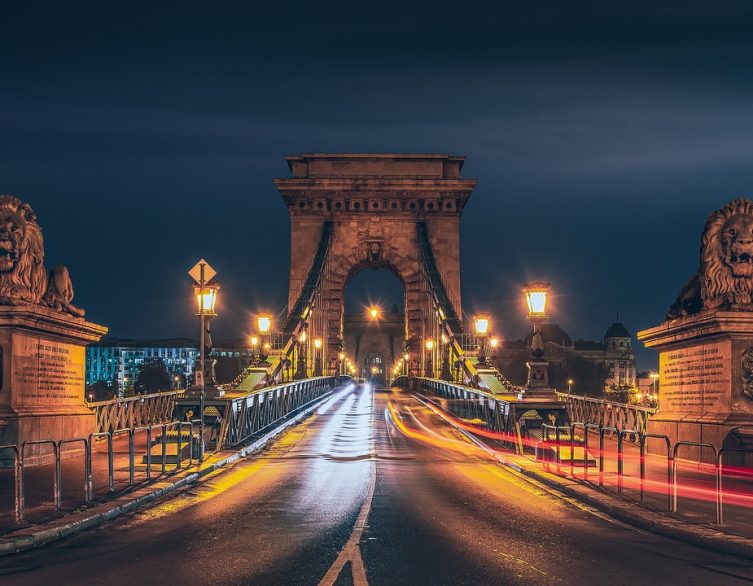Celebrating 50 Years of Budapest’s Iconic 0 Kilometer Stone
Nestled in the bustling heart of Budapest, at the Clark Ádám Square beneath the majestic Buda Castle, stands an unassuming yet profoundly significant monument—the 0 Kilometer Stone. This limestone sculpture, designed by renowned artist Miklós Borsos, marks a pivotal point in Hungary’s transportation network. As it celebrates its 50th anniversary this year, the stone invites visitors to delve into its fascinating history and cultural significance.
The Symbolism of Zero: A Practical and Poetic Landmark
At first glance, the 0 Kilometer Stone might appear to be just a simple typographic “0.” Standing three meters tall on an 80-centimeter pedestal, it is complemented only by the letters “KM,” denoting kilometers. Yet this minimalist design holds immense practical importance. It serves as the official starting point for measuring distances on Hungary’s major highways, including routes like the M3, M4, M5, and others. From this central location, nearly all of Hungary’s road networks radiate outward.
Beyond its functionality, the stone embodies a modernist aesthetic that transforms a utilitarian object into a piece of public art. Its clean lines and restrained style reflect Borsos Miklós’s ability to infuse beauty into everyday infrastructure. For tourists and locals alike, this sculpture is more than just a marker—it is a symbol of Budapest’s interconnectedness and Hungary’s progress.
A Journey Through Time: The Evolution of the 0 Kilometer Stone
The 0 Kilometer Stone we see today was inaugurated on April 4, 1975, but its story stretches back much further. Originally, the symbolic starting point for Hungary’s road network was located at the royal palace threshold. Over time, it was moved to Clark Ádám Square to accommodate modern infrastructure developments.
The first monument at this site was erected in 1932 and featured Körmendi-Frim Jenő’s Patrona Hungariae sculpture—a depiction of Hungary’s patron saint. Tragically, this marble statue was damaged during World War II and later dismantled. In 1953, Molnár László created a new monument representing a worker with an automobile wheel. However, this sculpture was relocated in 1974 to make way for Borsos Miklós’s modernist design.
Borsos’s creation has remained unchanged since its placement in 1975, enduring as both a functional landmark and an artistic centerpiece. Its timeless design seamlessly integrates with the surrounding urban landscape while preserving its original purpose.
A Cultural Touchstone in Budapest’s Cityscape
The Clark Ádám Square is one of Budapest’s most iconic locations. Situated at the foot of the Chain Bridge and adjacent to the Buda Castle Funicular Railway, it is a hub for tourists exploring the city. The 0 Kilometer Stone has become a favorite spot for photographs, often serving as an unintentional backdrop for visitors who may not realize its significance.
Best deals of Budapest
This monument also plays a role in shaping Budapest’s cultural identity. Its presence at such a prominent location underscores the city’s historical importance as a crossroads for travelers and trade routes. Over time, minor restorations have ensured that it remains both visually appealing and structurally sound.
Why Visit the 0 Kilometer Stone?
For foreign tourists visiting Budapest, the 0 Kilometer Stone offers a unique blend of history, practicality, and artistic charm. It is not merely a sculpture; it is a gateway to understanding Hungary’s transportation system and infrastructure development over decades. Whether you’re crossing the Chain Bridge or riding the Buda Castle Funicular up to Buda Castle, stopping by this landmark provides an opportunity to connect with Budapest’s rich heritage.
As it celebrates its golden jubilee in 2025, the stone invites visitors to pause and reflect on its enduring legacy. Its simple yet profound design reminds us that even from “nothing,” great journeys begin—whether they are measured in kilometers or memories.
A Tribute to Miklós Borsos: The Artist Behind the Monument
Miklós Borsos was not only a sculptor but also an accomplished graphic artist and musician. His artistic philosophy revolved around creating works that resonate with people across generations. In interviews during his lifetime, he emphasized that true art transcends trends and commercial interests—it speaks directly to human emotion and shared experiences.
The elongated central line within his “0” design reflects his fascination with balance and harmony—a motif inspired by his love for music and his experience as a violinist. For Borsos, art was deeply intertwined with life itself—a sentiment that shines through in every curve of this iconic sculpture.
Conclusion: Where All Roads Begin
The 0 Kilometer Stone stands as more than just a geographical marker; it is a testament to Budapest’s dynamic history and cultural vibrancy. As you explore Clark Ádám Square or gaze up at Buda Castle’s towering walls, take a moment to appreciate this understated yet powerful monument. It represents not only Hungary’s transportation network but also its ability to connect people—past and present—through art and shared journeys.
In celebrating fifty years of this remarkable sculpture, let us remember that every adventure begins somewhere—and sometimes it starts with zero.



















